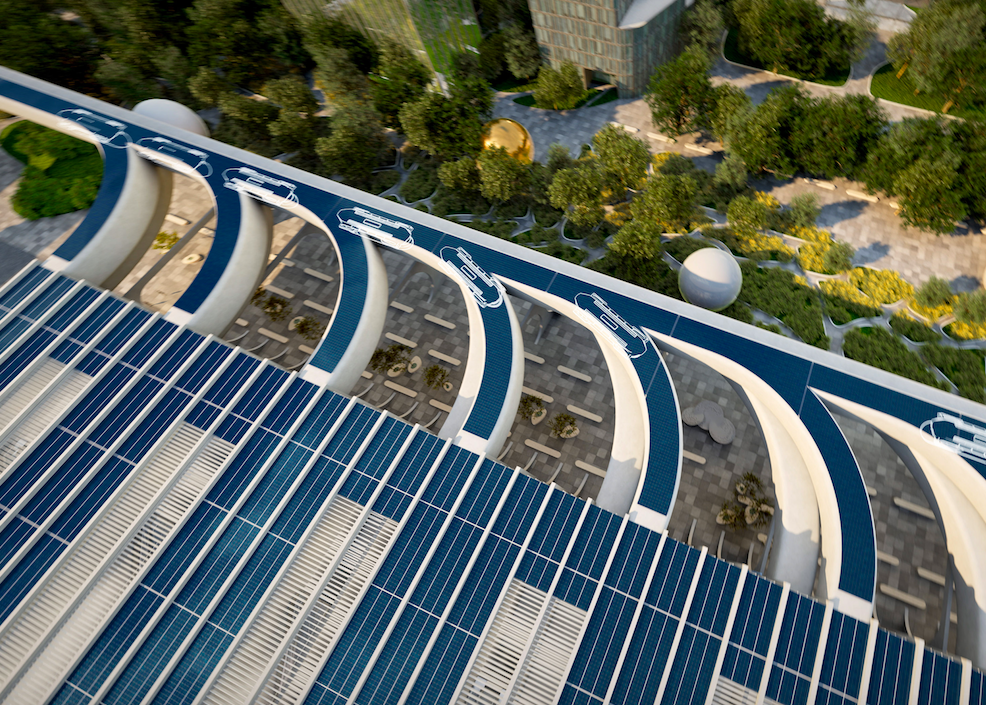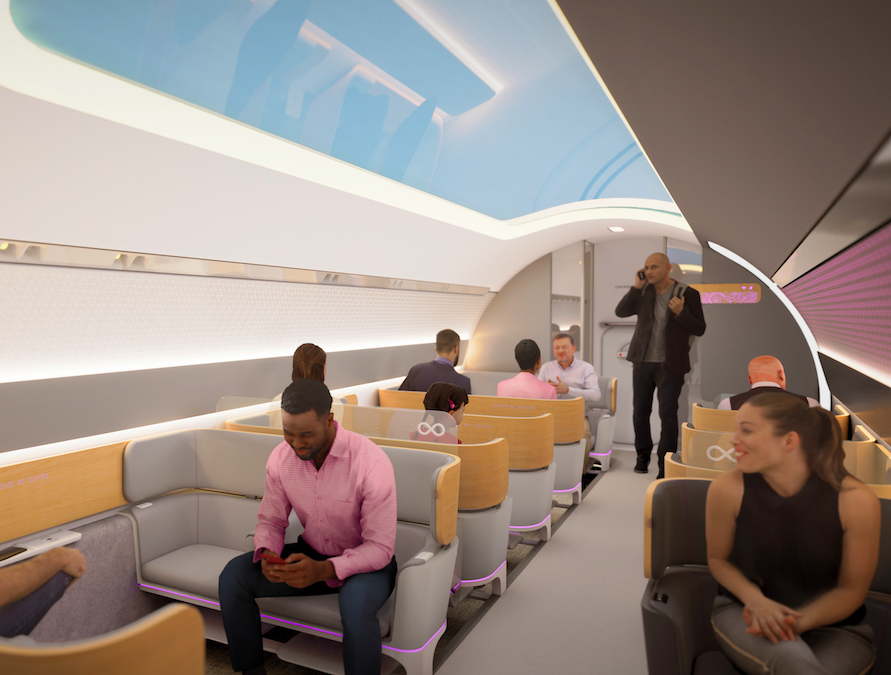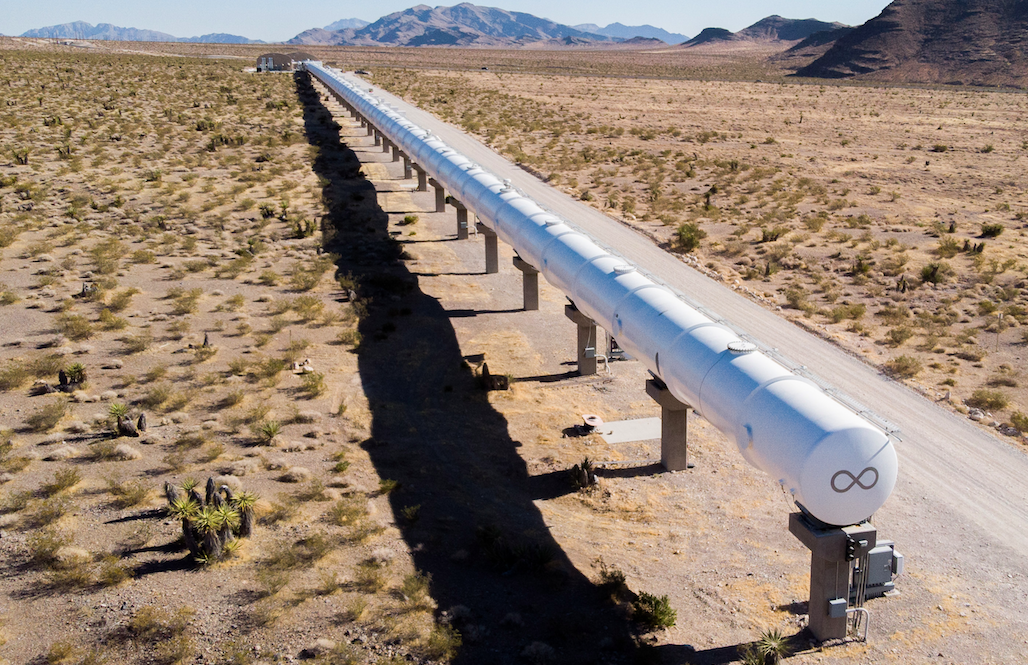
Virgin Hyperloop has unveiled detailed renderings for its hyperloop experience only a few months after a pod carried its first passengers safely.
The videos and images show a vision of high-speed tubes crossing landscapes, connecting cities and transporting commuters to their destinations in a mere matter of minutes — all with an eye for passenger comfort.

“Virgin Hyperloop can accelerate the future of mobility on land. The new mode of travel at supersonic speed rethinks transportation and the perception of space, landscape, time, and distance,” Bjarke Ingels, founder and creative director of BIG-Bjarke Ingels Group, a partner in the project, said in a statement. “In this day and age, Virgin Hyperloop taking off from our portals provides holistic, intelligent transportation for a globalized community to travel across vast distances in a safer, cleaner, easier, and faster way than airlines.”
A fifth mode of transportation
The hyperloop concept was first conceived in 2012 by tech magnate Elon Musk as a fifth mode of transportation, added to the series of automobiles, planes, trains and boats. Musk’s initial idea was to transport people from San Francisco to Los Angeles in half an hour within a pressurized tube system.
“What you want is something that never crashes, that’s at least twice as fast as a plane, that’s solar powered and that leaves right when you arrive, so there is no waiting for a specific departure time,” Musk said about the system almost a decade ago.

Since then, private companies have followed Musk’s charge, developing and testing prototypes. Of all the pioneers, Virgin Hyperloop has come closest to its full vision of 23-passenger pods that reach up to 670 mph.
Building a low-impact, cost-friendly hyperloop
While hyperloop has the clear case of transportation innovation going for it - unlike Europe and much of Asia, the United States still doesn’t have high-speed rail - it also has the potential to advance the U.S.’s carbon reduction goals.
Virgin Hyperloop plans to follow-through on Musk’s vision of a transportation system run exclusively on renewables, Kristen Hammer, the company’s materials engineering manager, told GreenBiz, adding, “We don’t want to be chugging smoke into the air or causing pollution. There’s no world in where we have to cause pollution. It can be run off of all sorts of sustainable energy.”

According to its website, the Virgin Hyperloop has been built to be entirely run on electricity, drawing power from anywhere along its route, potentially including solar panels covering the tubes.
There is, of course, more than energy to consider in environmental impact. In-city tunneling, materials sourcing, noise and long-term materials management are just some of the elements a hyperloop company needs to consider in order to build a truly environmentally-friendly system, GreenBiz outlines.
And cost-wise? The CEO of Virgin Hyperloop, Jay Walder, has said his high-speed transportation system can bring economic uplift and job creation to a region.
A 2020 Hyperloop Feasibility Study from the Mid-Ohio Regional Planning Commission found that the Chicago-Columbus-Pittsburgh corridor would see an overall $300 billion economic boost, $19 billion of which would come directly from transportation benefits. Some of the sources of these savings include decreased travel time, increased travel safety, diminished transportation emissions and shipment of high-value and time-sensitive freight.
Will the Virgin Hyperloop move forward?
Through the din of skepticism about a hyperloop’s feasibility, Virgin Hyperloop says it keeps moving forward with its timetable. November’s passenger test was a big milestone. Now, Virgin Hyperloop is working toward regulating and certifying its hyperloop system — aiming to achieve safety certification by 2025.
By the time commercial operations start almost a decade from now, in 2030, it’s likely last month’s renderings will no longer look like they belong in a science fiction novel.
Image credits: Virgin Hyperloop


Roya Sabri is a writer and graphic designer based in Illinois. She writes about the circular economy, advancements in CSR, the environment and equity. As a freelancer, she has worked on communications for nonprofits and multinational organizations. Find her on LinkedIn.














